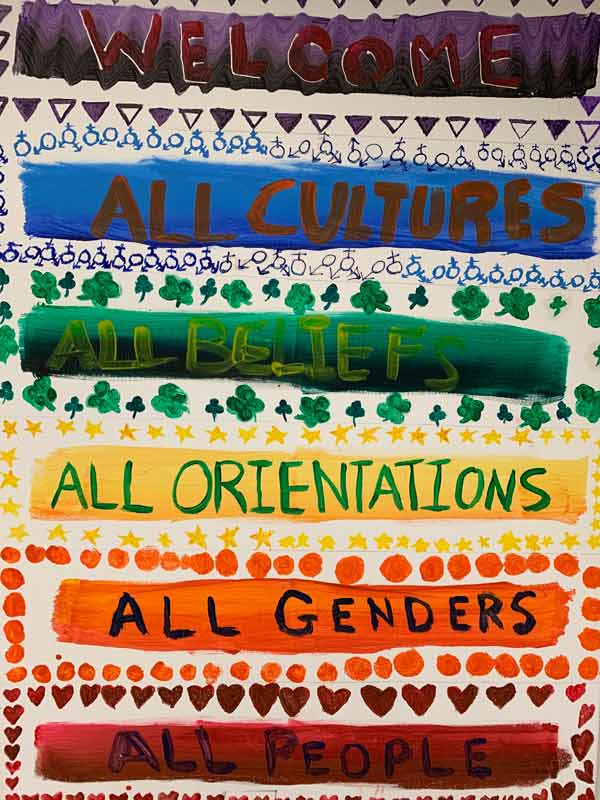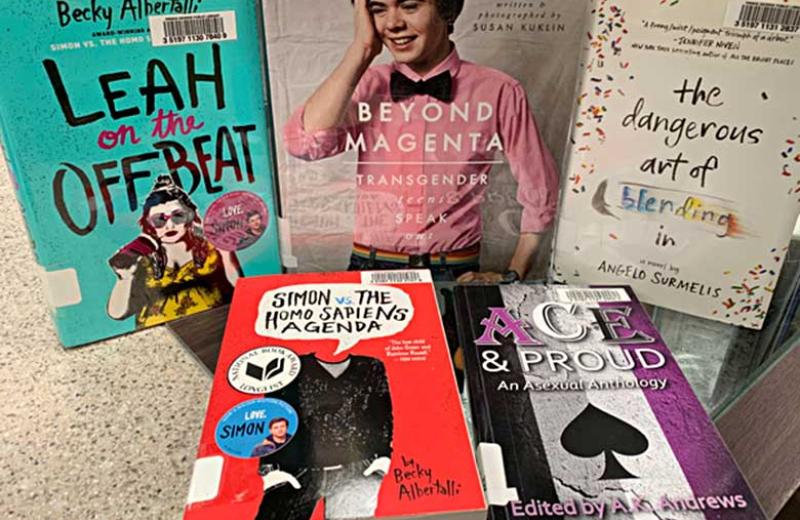When youth use public libraries, they are often searching for fictional narratives with lived experiences similar to their own, or, in some instances, health information specific to their needs and lifestyles. But, health information is not all that LGBTQ2 youth search for when visiting libraries.
Young Adult novels focused on LGBTQ2 characters and narratives are currently some of the most popular titles among all youth. Novels and feature films such Becky Albertalli’s Simon versus the Homo Sapiens Agenda are dominating bestsellers lists this year. Narratives featuring relatable LBGTQ2 characters, including storylines around how they make it through difficult times, can help the reader normalize their sense of self-identity. In a research study from the University of Northern British Columbia, it was found that LGTBQ2 youth, when searching for [health] information, sought not only validity in information, but also a feeling of safety when searching and accessing this highly sensitive information in their lives.[1]
Public libraries are welcoming spaces for LGBTQ2 youth
Youth programs are created without sexual orientation or personal identity in mind. Instead, the focus is on engaging, educating and making sure that youth are having fun, meeting others their own age, and interacting in a friendly and safe environment.
Did you know that LGBTQ2 youth are at a higher risk for suffering from issues related to mental health than others their age? LGBTQ2 youth face greater stigmatization and societal pressure to conform to perceived heteronormative expectations and, in turn, are more likely to internalize their struggles, putting their mental health at risk.
This stigmatization is generated by a variety of factors, including:
- Popular culture perpetuating heterosexual norms – e.g. boys and girls dating, getting married, etc. – and sensationalizing non-heterosexual experiences.
- Lack of mental health and general health information directly oriented toward LGBTQ2 members in communities.
- Fear of coming out and concern about not being accepted by friends, family, and social groups.

By providing inclusive spaces, like the public library, that are accepting of everyone, regardless of their personal identity or sexual orientation, we can support their mental and physical safety.
Safe and inclusive spaces prevent stigma, by providing youth with a neutral ground where they can be themselves. These spaces can exist anywhere, whether it’s a school classroom, workplace, or the family household. Creating these spaces is achievable as long as the adults and mentors in the lives of these youth take the time to advocate for their basic needs.
These principles are applicable in any environment. Public libraries are a great example of how these values can be applied to a diverse and complex environment, as the mandate of many public libraries is to meet the basic needs of each and every patron.
Encouraging LGBTQ2 youth to embrace safe and inclusive spaces all around them ensures they have areas of solitude where acceptance of all identities is guaranteed, and where they can be themselves.
Contact your local libraries and see what resources and information is available for LGBTQ2 youth; you may be surprised what you’ll find!
Here’s how you can help!
When creating inclusive spaces, it’s important to recognize some general principles that help establish the space as welcoming for LGTBQ2 youth, including:
- Using inclusive language and proper gender pronouns (e.g. they/their rather than he/she)
- Encouraging open and accepting attitudes
- Providing basic education & understanding of various gender identities and sexual orientations
- Providing youth with opportunities to explore the lived experiences of others like them via books, television, web, or guest speakers
Hawkins, Blake. 2017. Does Quality Matter? Health Information Behaviors of LGBTQ Youth in Prince George, Canada. Presented at 80th Annual Meeting of the Association for Information Science & Technology, Washington, DC. Oct. 27-Nov. 1, 2017.
(Editor’s note: This article first appeared in Northern Health’s Healthier You – Fall 2018 edition on Youth Mental Wellness. Read the full issue here.)














Comments